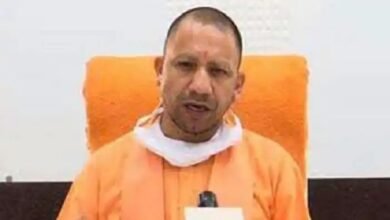[ad_1]

एनिमल में बॉबी देओल के रोल ने लाखों दिलों को जीत लिया है. बिना डायलॉग के उन्होंने खूंखार विलेन का शानदार रोल किया है. एनिमल में बॉबी देओल के किरदार का नाम अबरार हक होता है, जिसने तीन शादियां की होती हैं. फिल्म में अबरार हक को तीसरी शादी करते हुए दिखाया गया है. लेकिन क्या आप जानते हैं कि एनिमल में जिस लड़की ने बॉबी देओल के साथ तीसरी शादी की है वह कौन है. अगर नहीं तो आज हम आपको बताते हैं कि उस लड़की के बारे में.
एनिमल में बॉबी देओल के साथ तीसरी शादी करने वाली लड़की का नाम मानसी तक्षक है. मानसी तक्षक एनिमल से पहले शाहरुख खान की फिल्म पठान में भी नजर आ चुकी हैं. उन्होंने इस फिल्म में जिम का पत्नी का रोल किया था. पठान में जिम का रोल जॉन अब्राहम ने किया था. मानसी तक्षक खूबसूरती में कई एक्ट्रेस को मात देती हैं. वह सोशल मीडिया पर काफी एक्टिव रहती हैं और खास पोस्ट भी शेयर करती रहती हैं. बात करें मानसी तक्षक की तो वह सिर्फ 25 साल की हैं. उनका जन्म साल 1998 को मुंबई में हुआ था. मानसी तक्षक ने अपनी स्कूल की पढ़ाई गुजरात से की है. इसके बाद उन्होंने मुंबई के भावना कॉलेज से मास मीडिया में ग्रेजुएशन किया है.
मानसी तक्षक ने साल 2019 में फेमिना मिस इंडिया ब्यूटी पेजेंट में भी हिस्सा लिया था. जहां उन्होंने मिस इंडिया गुजरात का खिताब अपने नाम किया था. इसके बाद मानसी तक्षक कई ब्यूटी पेजेंट का हिस्सा बनी थीं. वह कई विज्ञापन में नजर आ चुकी हैं. मानसी तक्षक ने अपनी एक्टिंग की शुरुआत शोर्ट फिल्म आई प्रॉमिस से की थी. यह फिल्म साल 2022 में आई थी. आई प्रॉमिस में मानसी तक्षक ने हिना का रोल किया था. यह शॉर्ट फिल्म यूट्यूब पर भी मौजूद है.
[ad_2]



